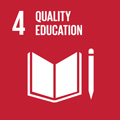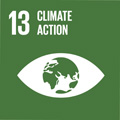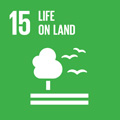- Docente: Anna Rosellini
- Credits: 6
- SSD: L-ART/04
- Language: Italian
- Teaching Mode: In-person learning (entirely or partially)
- Campus: Bologna
-
Corso:
Second cycle degree programme (LM) in
Visual Arts (cod. 9071)
Also valid for Second cycle degree programme (LM) in Visual Arts (cod. 6819)
-
from Nov 12, 2025 to Dec 11, 2025
Learning outcomes
After the course, the students possess methodological tools related to the didactics of Visual Arts. In particular, the student: knows the main subjects of disciplinary didactics, in its specificities related to the evolution of styles and techniques; acquires methodological skills useful to define an educational and formative planning and to teach Visual Arts in Secondary Schools.
Course contents
The course is structured into lectures (1/3 of the course) and workshops (2/3 of the course) dedicated to exploring the operational possibilities and theoretical and cultural foundations of visual arts education, with particular emphasis on the relationship between education, art, materials, techniques, and ecology.
Lectures analyze educational proposals from practitioners, artists, designers, and architects. Special attention is given to the experiments known as Radical Pedagogies and the collective and participatory practices that, throughout history, have fostered political and social action through direct experience with techniques and materials.
Workshop
CANTIERI
Teacher Anna Rosellini / Tutor Alessandro Paolo Lena
The lectures are complemented by a workshop during which students, divided into groups, develop proposals for art education workshops.
For more information, see: WORKSHOP PROGRAM
ORGANISATION OF LESSONS
Lessons 1, 2, 3
Lectures
Lesson 4
Workshop: EXPLORATION AND STRUCTURING
Lessons 5 and 6
Workshop: PROJECT HYPOTHESES
Lessons 7 and 8
Workshop: PROJECT EVOLUTION
Lessons 9 and 10
Workshop: PRESENTATION OF PRELIMINARY PROJECTS (with the participation of Simona Pagano and Stefano Setti).
Regular attendance is recommended.
The final presentation of the projects will take place on 23 January 2026 (from approximately 10:00 a.m. to 6:00 p.m.) and will feature Amerigo Mariotti, Beatrice Sartori and Giorgia Tronconi. It will be organised in collaboration with the exhibition space dedicated to emerging art and contemporary research ADIACENZE.
Readings/Bibliography
Attending students
Francesco Spampinato, Irene Rinaldi, Facciamo Presente. Istruzioni d'artista per cambiare il futuro, Milano, Topipittori, 2025.
Franca Zuccoli, Didattica dell'arte. Riflessioni e percorsi, Milano, Franco Angeli, 2020.
Valerio Borgonuovo, Silvia Franceschini (dir.), Global tools (1973-1975). Quando l'educazione coinciderà con la vita, Milano, Nero, 2018.
Recommended Reading
Adolfo Natalini, Lorenzo Netti, Alessandro Poli, Cristiano Toraldo di Francia, Cultura Materiale Extraurbana, Firenze, Alinea, 1983.
Marina Pugliese, Tecnica mista. Materiali e procedimenti nell'arte del XX secolo, Milano, Bruno Mondadori, 2006.
Anna Rosellini, Roberto Gargiani, Valori primordiali e ideologici della materia, da Uncini a LeWitt, Roma, Aracne, 2018.
Anna Rosellini, Calchi di spazio, mnemosine e rovine, Roma, Aracne, 2019.
Beatriz Colomina, Ignacio G. Galán, Evangelos Kotsioris, Anna-Maria Meister (a cura di), Radical Pedagogies, Cambridge (Massachusetts), The MIT Press, 2022.
Non-attending students
Beatriz Colomina, Ignacio G. Galán, Evangelos Kotsioris, Anna-Maria Meister (eds.), Radical Pedagogies, Cambridge (Massachusetts), The MIT Press, 2022: study the introduction and 50 cases of your choice from those analysed in the volume.
Franca Zuccoli, Didattica dell'arte. Riflessioni e percorsi, Milano, Franco Angeli, 2020.
Valerio Borgonuovo, Silvia Franceschini (eds.), Global tools (1973-1975). Quando l'educazione coinciderà con la vita, Milano, Nero, 2018.
Teaching methods
Lectures, workshops.
Assessment methods
Attending students
The examination consists of the development and presentation of an art education workshop project.
Project reviews are scheduled during the course. Participation in these reviews is mandatory. Reviews are not graded and should be considered opportunities for discussion and sharing aimed at improving the project. At the end of the course, there will be an initial presentation of preliminary projects (this presentation allows for initial feedback on the project developed; its evaluation is not considered in the final grade but indicates the progress of the project, its strengths and areas for improvement). The final presentation is organised approximately one month after the end of the course and involves the participation of a committee of lecturers and experts in the field (this presentation is subject to evaluation).
For further details see the WORKSHOP PROGRAM.
Assessment criteria:
1. The achievement of a comprehensive understanding of the topic covered in the project, mastery of expression and specific language, originality of analysis and reflection, and familiarity with the methods and tools of art education will be assessed with marks of excellence.
2. An essentially mechanical or mnemonic knowledge of the subject covered in the project, an unarticulated ability to synthesise and analyse, or correct but not always appropriate language, as well as a school-level mastery of the methods and tools of art education will lead to fair evaluations.
3. Pedagogical gaps or inappropriate language, as well as poor knowledge of the methods and tools of art education, will lead to grades at the limit of sufficiency.
4. Pedagogical gaps, inappropriate language, lack of orientation in analysis, methods and tools of art education can only be evaluated negatively.
5. The graphic quality of the project and active participation in the workshop will be evaluated.
Non-attending students
Oral examination on the contents of the bibliography.
To pass the oral exam, students must demonstrate that they have acquired a critical understanding of the topics discussed in the bibliography.
Assessment criteria:
1. An organic understanding of the topics presented in the bibliography, mastery of expression and specific language, originality of thought, and familiarity with the tools of art education analysis will be assessed with excellent marks.
2. A mostly mechanical or mnemonic knowledge of the subject, an inability to synthesise and analyse, or correct but not always appropriate language, as well as a school-level mastery of visual arts education will lead to fair grades.
3. Educational gaps or inappropriate language, as well as poor knowledge of the tools of art education analysis, will lead to grades that are just above the pass mark.
4. Educational gaps, inappropriate language, lack of orientation within the bibliography, and inability to analyse visual arts education can only be assessed negatively.
Students with learning disorders and\or temporary or permanent disabilities: please, contact the office responsible (https://site.unibo.it/studenti-con-disabilita-e-dsa/en/for-students) as soon as possible so that they can propose acceptable adjustments. The request for adaptation must be submitted in advance (15 days before the exam date) to the lecturer, who will assess the appropriateness of the adjustments, taking into account the teaching objectives.
Teaching tools
The course images, part of the bibliography and the various detailed programmes are provided to the students.
Office hours
See the website of Anna Rosellini
SDGs




This teaching activity contributes to the achievement of the Sustainable Development Goals of the UN 2030 Agenda.
